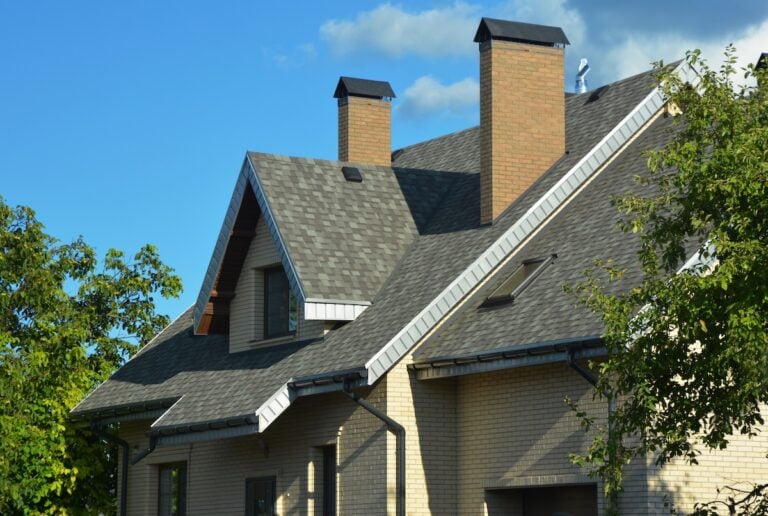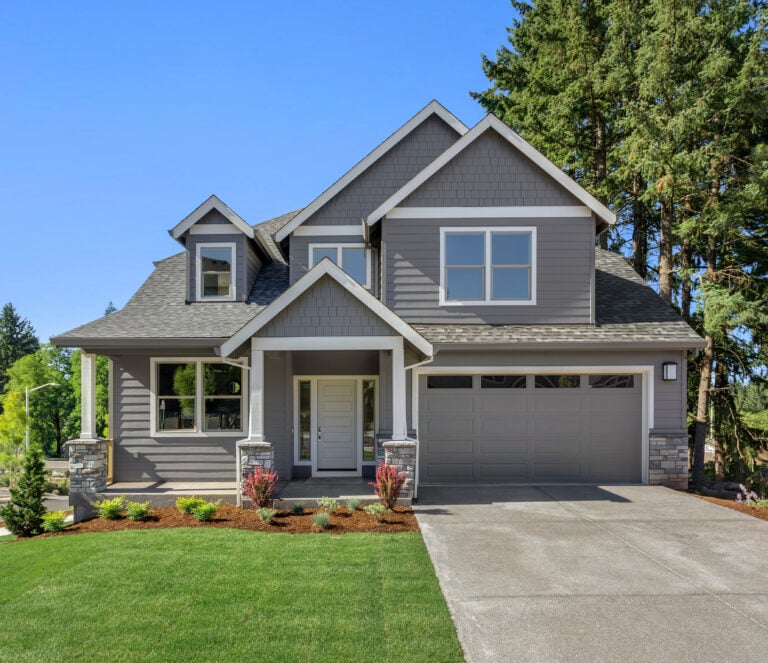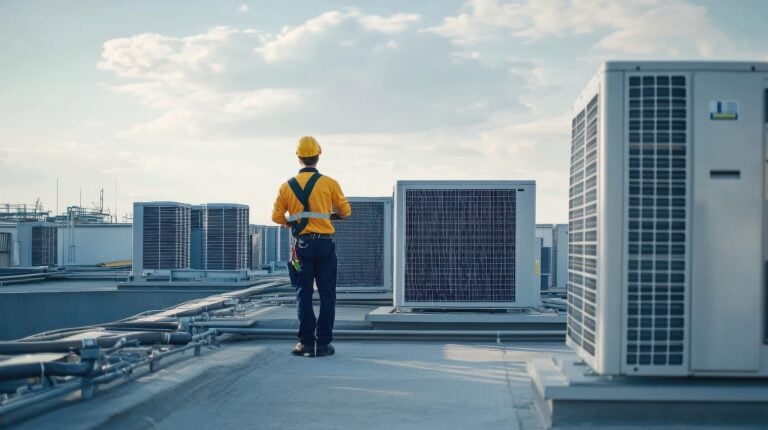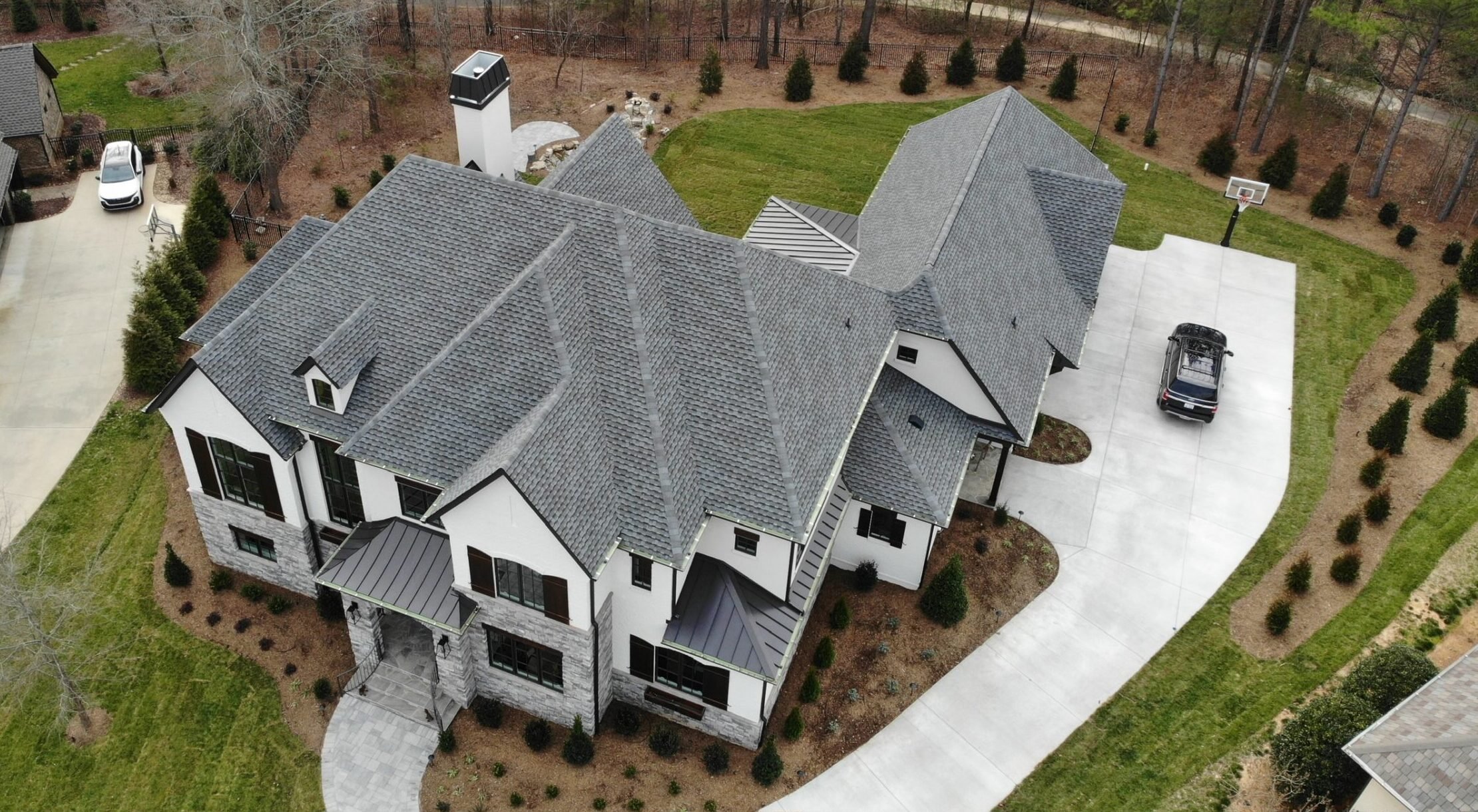Metal Roof vs Shingles: Which Is Better for Your Home?
Posted 8.27.25 | 9 Minute Read
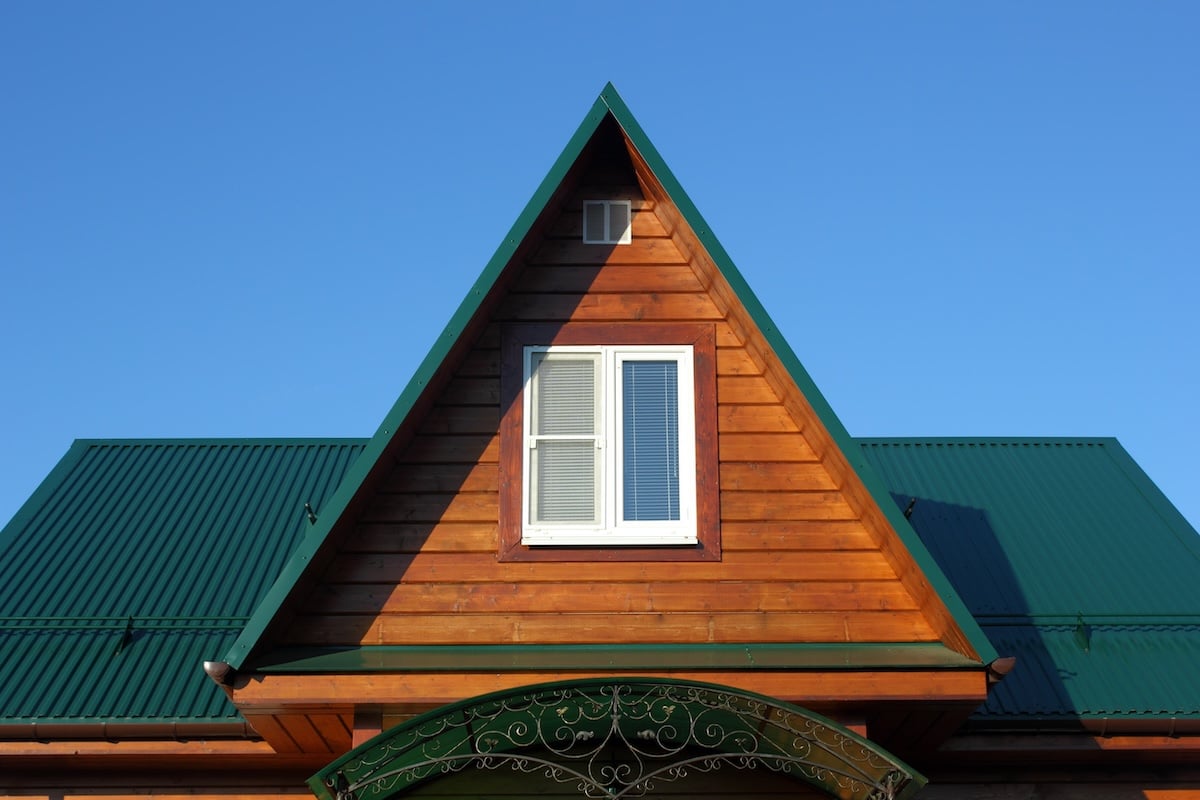
Choosing the right roofing material is one of the most important decisions you’ll make as a homeowner. Your roof protects your family and belongings from the elements while significantly impacting your home’s curb appeal and value. Two of the most popular options homeowners consider are metal roofing and traditional asphalt shingles, but which one is the better choice for your specific needs?
The metal roof vs shingles debate involves several key factors that can influence your decision. We’ll examine the differences in cost, durability, energy efficiency, maintenance requirements, and aesthetic appeal. We’ll also explore the installation process for both materials, their environmental impact, and how each performs in various weather conditions.
By understanding these crucial differences, you’ll be equipped to make an informed decision that aligns with your budget, climate, and long-term goals. Here’s what we’ll cover:
- Initial costs and long-term value comparison
- Durability and lifespan expectations
- Energy efficiency and utility savings
- Maintenance requirements and repair considerations
- Aesthetic options and architectural compatibility
- Installation complexity and timeline
- Environmental impact and sustainability
- Performance in different weather conditions
💵 Cost Analysis: Upfront Investment vs Long-Term Value

The most significant factor many homeowners consider when comparing metal roof vs shingles is the initial cost. Asphalt shingles typically cost between $3 to $7 per square foot installed, making them one of the most budget-friendly roofing options available. A complete shingle roof replacement for an average-sized home ranges from $8,000 to $16,000.
Metal roofing requires a substantially higher upfront investment, ranging from $7 to $15 per square foot installed. For the same average home, you can expect to pay between $15,000 and $30,000 for a complete metal roof installation. This significant price difference often makes homeowners hesitate when considering metal roofing.
However, the long-term financial picture tells a different story. While shingles may seem more affordable initially, they typically need replacement every 15 to 25 years. Metal roofs can last 40 to 70 years with proper maintenance, often outlasting multiple shingle replacements.
Return on Investment Considerations
Metal roofing can increase your home’s resale value by approximately 1% to 6%, according to recent real estate studies. The exact amount depends on your local market and the quality of installation. Shingles, while maintaining property value, don’t typically add significant resale value unless they’re replacing a severely damaged roof.
Energy savings also play a crucial role in the long-term cost equation. Metal roofs reflect solar heat more effectively than shingles, potentially reducing cooling costs by 10% to 25%. Over the lifetime of the roof, these energy savings can offset a portion of the initial cost difference.
🏠 Durability and Weather Resistance
When examining metal roof vs shingles for durability, metal roofing clearly takes the lead. High-quality metal roofing systems can withstand wind speeds up to 140 mph, making them excellent choices for areas prone to severe storms. They’re also fire-resistant, earning Class A fire ratings, and don’t crack, shrink, or erode like traditional shingles.
Asphalt shingles, while adequate for most weather conditions, are more susceptible to damage from severe weather events. High winds can lift or tear shingles, hail can cause granule loss and cracking, and extreme temperature fluctuations can cause them to expand and contract, leading to premature aging.
Impact Resistance
Modern metal roofing often receives Class 4 impact resistance ratings, the highest available. This means they can withstand impact from hailstones up to 2 inches in diameter without sustaining damage. Many insurance companies offer discounts for homes with impact-resistant roofing materials.
Traditional shingles vary in impact resistance depending on their quality and construction. While impact-resistant shingles are available, they typically don’t match the performance of metal roofing and may still suffer damage from large hail or falling debris.
⚖️ 7 Key Differences Between Metal Roofs and Shingles
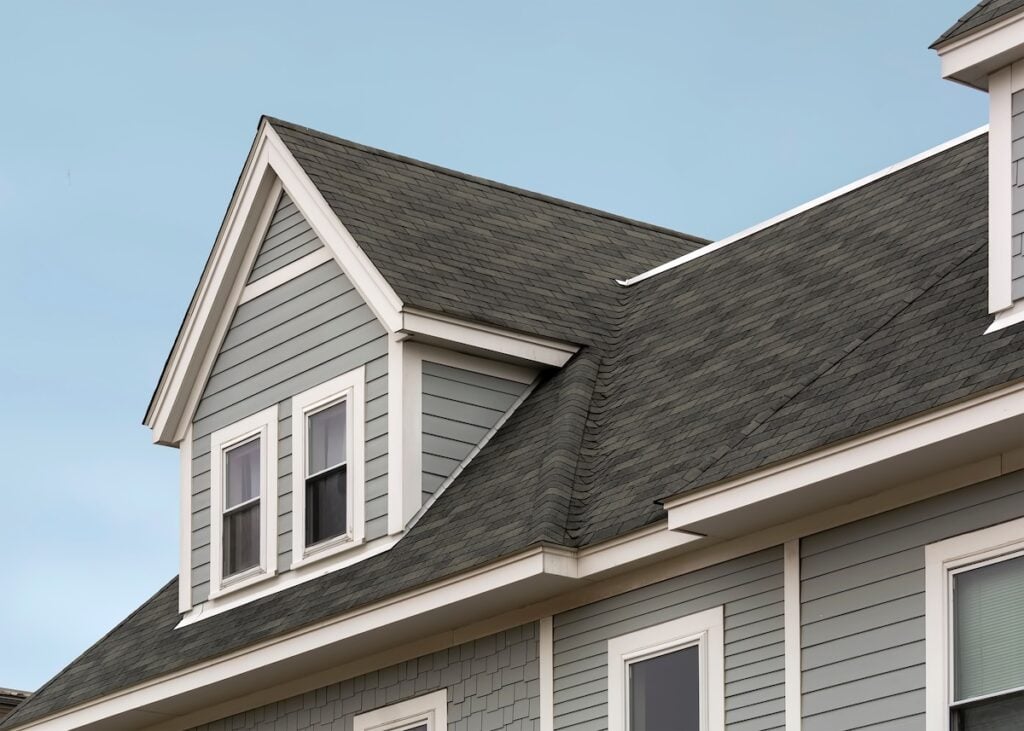
Understanding the fundamental differences between these roofing materials will help you make the best choice for your home:
1. Lifespan and Longevity
Metal roofs last 40 to 70 years on average, while asphalt shingles typically need replacement every 15 to 25 years. This means you might replace a shingle roof two to three times during the lifespan of a single metal roof.
2. Weight and Structural Requirements
Metal roofing is significantly lighter than shingles, weighing 1 to 3 pounds per square foot compared to 2 to 5 pounds for asphalt shingles. This lighter weight puts less stress on your home’s structural framework.
3. Installation Complexity
Shingle installation is more straightforward and can be completed by most roofing contractors. Metal roof installation requires specialized knowledge and experience, making it crucial to choose qualified contractors.
4. Noise Levels
Contrary to popular belief, properly installed metal roofing with adequate insulation isn’t significantly noisier than shingles during rain or hailstorms. The noise difference is minimal in modern installations.
5. Color and Style Options
Shingles offer extensive color and texture options, including architectural styles that mimic wood, slate, or tile. Metal roofing also provides various colors and profiles, from traditional standing seam to options that replicate shingle or tile appearances.
6. Repair Requirements
Shingle repairs are generally easier and less expensive to complete. Individual damaged shingles can be replaced without affecting the entire roof system. Metal roof repairs, while less frequent, may require specialized techniques and materials.
7. Environmental Impact
Metal roofing is typically made from 25% to 95% recycled materials and is completely recyclable at the end of its lifespan. Asphalt shingles contribute significantly to landfill waste, with millions of tons discarded annually.
💡 Energy Efficiency and Environmental Benefits
The energy efficiency comparison in the metal roof vs shingles debate strongly favors metal roofing. Metal roofs reflect solar radiant heat rather than absorbing it, which can reduce cooling costs significantly during hot summer months. This reflective property, combined with proper ventilation, can keep attic temperatures 50 to 60 degrees cooler than with traditional shingles.
Many metal roofing products qualify for Energy Star certification, making homeowners eligible for federal tax credits and utility rebates. These incentives can help offset the higher initial cost while providing ongoing energy savings.
Shingles, particularly darker colors, absorb and retain heat, which can increase cooling costs and contribute to urban heat island effects in densely populated areas. However, newer “cool” shingles with reflective granules are available and provide improved energy performance, though they still don’t match metal roofing’s efficiency.
Sustainability Considerations
From an environmental perspective, metal roofing offers several advantages. The longevity of metal roofs means fewer replacements over time, reducing the environmental impact of manufacturing and disposal. Additionally, metal roofs can support solar panel installations more effectively than shingles, making them ideal for homeowners interested in renewable energy.
The production of asphalt shingles relies heavily on petroleum products, and their relatively short lifespan means more frequent replacements and disposal. However, recycling programs for asphalt shingles are becoming more common, helping to reduce their environmental impact.
🛠️ Maintenance Requirements and Lifecycle Costs
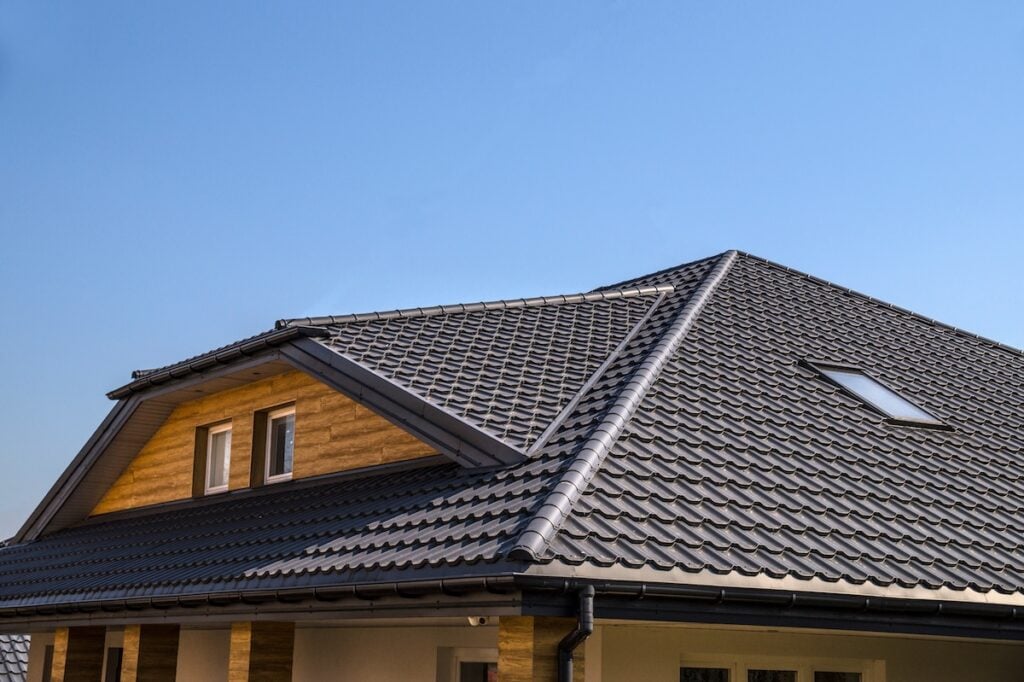
Maintenance needs differ significantly when comparing metal roof vs shingles. Metal roofs require minimal maintenance beyond occasional inspections and gutter cleaning. The smooth surface of metal roofing sheds debris easily and doesn’t support moss or algae growth like shingles can.
Asphalt shingles require more regular maintenance, including periodic inspections for loose, cracked, or missing shingles. Moss and algae growth can be problematic in humid climates, requiring cleaning or treatment to prevent damage. Granule loss over time can expose the underlying asphalt, leading to deterioration and the need for replacement.
Professional Inspection Recommendations
Both roofing types benefit from professional inspections every few years, particularly after severe weather events. However, metal roof inspections typically focus on fastener integrity and sealant condition, while shingle inspections must examine individual shingles for damage, wear, and proper adhesion.
🔎 Installation Process and Timeline
The installation process represents another key difference in the metal roof vs shingles comparison. Shingle installation is relatively straightforward and can typically be completed in one to three days for an average-sized home, depending on weather conditions and roof complexity.
Metal roof installation requires more specialized skills and typically takes two to five days. The process involves precise measurements, proper fastener placement, and careful attention to thermal expansion and contraction considerations. However, metal roofing can often be installed over existing shingles, potentially reducing disposal costs and installation time.
Contractor Selection Importance
Choosing the right contractor is crucial for both materials, but it’s particularly important for metal roofing. Improper installation can lead to leaks, thermal movement issues, and premature failure. Look for contractors with specific experience in metal roofing installation and proper certifications from manufacturers.
🤔 Frequently Asked Questions
Frequently Asked Questions (FAQs) save time by addressing common concerns upfront, helping users find answers quickly. They improve clarity, reduce confusion, and enhance the overall user experience.
How long do metal roofs last compared to shingles?
Metal roofs typically last 40 to 70 years with proper installation and maintenance, while asphalt shingles generally need replacement every 15 to 25 years. This means you might replace shingles two to three times during the lifespan of one metal roof.
Are metal roofs worth the extra cost?
For many homeowners, yes. While the initial cost is higher, metal roofs often provide better long-term value through durability, energy savings, and potential insurance discounts. The payback period varies but typically ranges from 10 to 20 years.
Do metal roofs make homes significantly noisier during rain?
Modern metal roofs with proper insulation and installation aren’t noticeably noisier than shingle roofs during rain or hailstorms. The noise difference is minimal and often not perceptible inside the home.
Can metal roofing be installed over existing shingles?
In many cases, yes. Metal roofing can often be installed over one layer of existing shingles, which can reduce disposal costs and installation time. However, this depends on local building codes and the condition of the existing roof structure.
Which roofing material performs better in extreme weather?
Metal roofing generally performs better in extreme weather conditions, including high winds, hail, and fire exposure. It can withstand wind speeds up to 140 mph and has superior impact resistance compared to most shingle options.
👨🔧 Trust Great State Roofing for Your Next Project
Choosing between metal roof vs shingles is a significant decision that affects your home’s protection, energy efficiency, and value for decades to come. At Great State Roofing, our experienced team understands the unique challenges and benefits of both roofing materials. We’re committed to helping you make the best choice for your specific needs, climate, and budget.
Don’t let an aging or damaged roof put your home at risk. Contact Great State Roofing today for a comprehensive evaluation of your roofing needs. Take the first step toward protecting your home with a roofing system that will serve you well for years to come.
